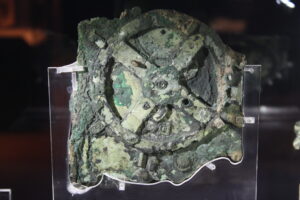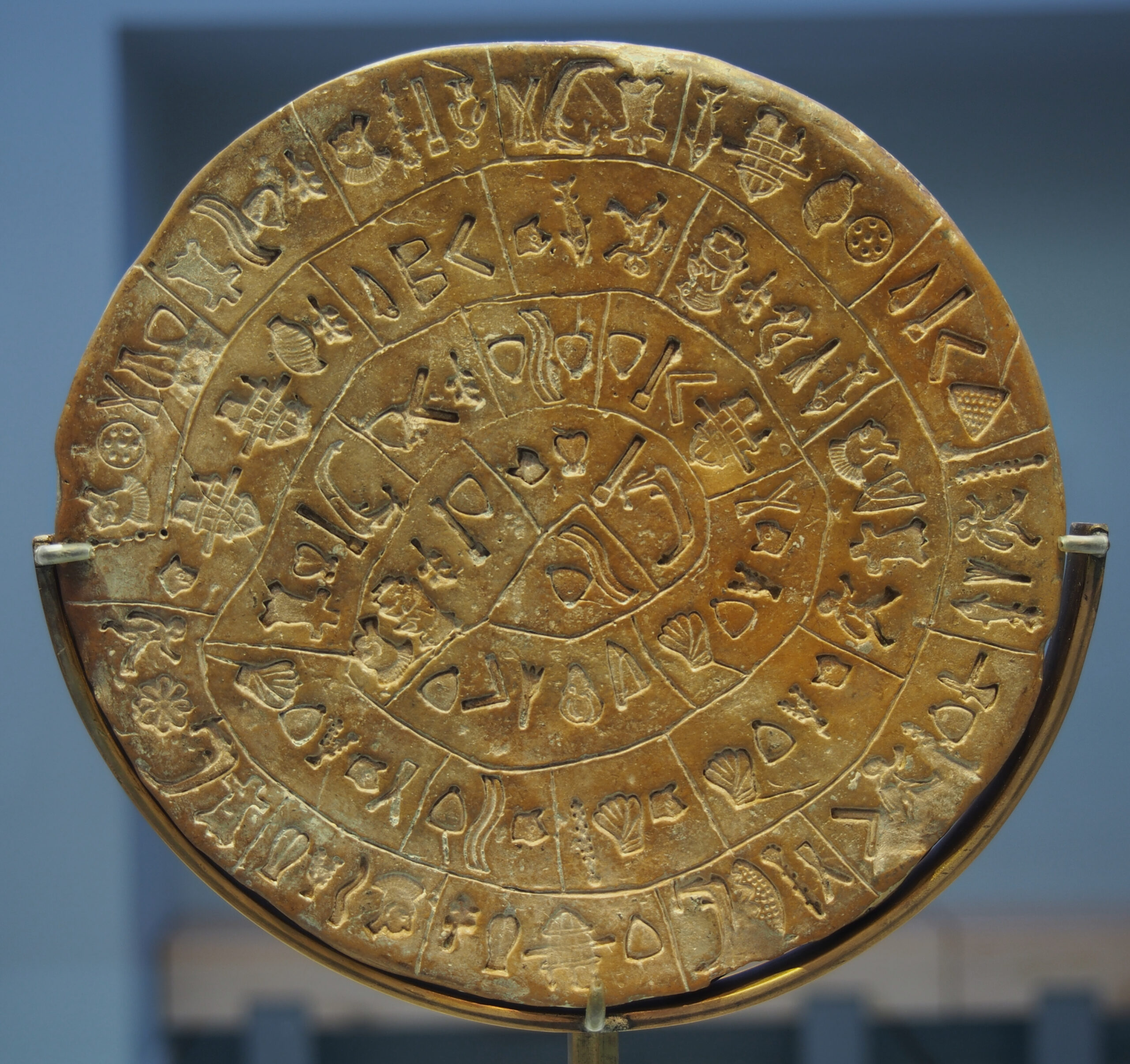Introduction
One of the greatest enigmas of the ancient world, the Antikythera Mechanism, has baffled scientists, historians, and archaeologists since its discovery. Found in the depths of the Aegean Sea, near the island of Antikythera, this ancient device, dating back to around 100 BCE, has been called the world's first analog computer. Its complexity far surpassed anything previously known from that era, raising questions about the technological capabilities of the ancient Greeks.
In this article, we will explore the known facts about the Antikythera Mechanism, its discoveries, the myths that surround it, and the theories that have emerged. Let's delve into one of history’s most compelling artifacts and uncover the truth behind its origins and use.
What Is the Antikythera Mechanism?

The Antikythera Mechanism is an ancient Greek device, composed of bronze gears and dials, used to predict astronomical positions and eclipses decades in advance. Discovered in 1901 from a Roman shipwreck off the coast of Antikythera, it has since been extensively studied to understand its purpose and engineering. The mechanism is made up of at least 30 bronze gears and was housed in a wooden case about the size of a shoebox. Its functions were revealed through modern imaging technology, including X-rays and 3D scans, showing it was capable of complex calculations related to the motion of celestial bodies.
Key Facts About the Antikythera Mechanism:
- Date of Creation: Scholars estimate it was constructed between 150 BCE and 100 BCE.
- Purpose: Used for predicting solar and lunar eclipses, planetary movements, and possibly other astronomical events.
- Materials: Made primarily of bronze gears enclosed in a wooden frame.
- Complexity: Consisted of over 30 gears, the likes of which wouldn’t appear again in Europe until the 14th century with mechanical clocks.
- Use in Navigation: Some scholars suggest it could have been used by sailors to aid in long voyages by tracking celestial events.
How Was the Antikythera Mechanism Discovered?
The mechanism was discovered in 1901 by sponge divers off the Greek island of Antikythera, inside a shipwreck dating back to the 1st century BCE. Along with various statues, pottery, and coins, this corroded lump of metal attracted little attention at first. It wasn’t until decades later, when advanced imaging technology was applied, that its intricate internal workings were revealed. Researchers soon realized they were dealing with an incredibly sophisticated device that changed our understanding of ancient technology.
Breakthrough Discoveries About the Mechanism
Since its discovery, several groundbreaking research projects have been undertaken to uncover the mysteries of the Antikythera Mechanism. The most significant revelations came through the use of high-resolution X-ray tomography in the early 21st century. These scans allowed scientists to reconstruct the internal gears and inscriptions hidden inside the mechanism.
- Planetary Movements: The mechanism not only tracked the movements of the Sun and Moon but also included the positions of planets like Mercury, Venus, Mars, Jupiter, and Saturn.
- Metonic Cycle: It was capable of calculating the Metonic cycle, which spans 19 years and accounts for the synchronization of solar and lunar years.
- Olympic Games: Some inscriptions suggest that it may have been used to determine the dates of the ancient Olympic Games, which were aligned with astronomical cycles.
These findings pushed the boundary of what we believed ancient Greeks were capable of in terms of precision engineering and scientific understanding.
Myths and Misconceptions About the Antikythera Mechanism
Over the years, numerous myths have arisen about the Antikythera Mechanism, often blurring the lines between historical fact and speculation. Let's debunk some of the common misconceptions:
- Aliens or Lost Civilizations: Some fringe theories have claimed that the Antikythera Mechanism was evidence of extraterrestrial contact or a remnant of an advanced lost civilization like Atlantis. However, there is no credible evidence to support such claims. The mechanism’s design is consistent with the mathematical and astronomical knowledge available in ancient Greece.
- Time Travel Device: Popular in science fiction, some have suggested that the Antikythera Mechanism was a time travel device. While imaginative, this theory is purely speculative and not based on any scientific analysis of the device.
- A Mysterious Inventor: Some have argued that the Antikythera Mechanism was created by an unknown genius or a singular figure. While we don’t know the identity of its creator, it's clear that its development was a product of the advanced knowledge of the Hellenistic period and probably built in a collaborative environment where mathematical and astronomical knowledge was shared.
How the Antikythera Mechanism Works: A Look Inside
The mechanism itself consisted of several concentric dials. On the front, there were two main dials: one showed the 365-day Egyptian calendar, and another tracked the 19-year Metonic cycle, which was essential for predicting eclipses and understanding the synchronization of solar and lunar calendars.

Behind these dials were the complex gears that moved based on intricate calculations, often described as "hand-cranked" to manually set the system into motion.

Each gear represented a different mathematical ratio. The largest gear in the mechanism moved the smaller gears, which would then adjust the positions of celestial objects relative to the user’s input.
The Saros Cycle Dial:
The Saros cycle, a period of approximately 18 years, was used in predicting eclipses. The Antikythera Mechanism tracked this cycle, which is one of its most remarkable functions, showcasing ancient Greeks' profound understanding of astronomy.
The Legacy and Importance of the Antikythera Mechanism
The discovery and study of the Antikythera Mechanism revolutionized our understanding of ancient Greek science and technology. It has shown that the ancient Greeks possessed the knowledge to build complex mechanical devices, a fact that had been previously unrecognized.
While much about the mechanism remains a mystery, it has already reshaped historical narratives about technological advancement in antiquity. Its influence can be seen in later developments in mechanical clocks and other intricate devices in Europe during the Middle Ages.
Conclusion: The Lasting Mystery of the Antikythera Mechanism
The Antikythera Mechanism remains one of the most fascinating discoveries from the ancient world, challenging our perceptions of ancient technology. While we have uncovered much about its workings, there are still gaps in our understanding, especially regarding how widespread such technology was or who exactly designed and built it.
This remarkable device demonstrates the ingenuity of ancient civilizations, urging us to reconsider what we think we know about history. As technology continues to evolve, new methods of analysis may reveal even more about this enigmatic mechanism.
Sources:
- Freeth, T., & Jones, A. (2012). "The Cosmos in the Antikythera Mechanism." Scientific American.
- Wright, M. T. (2006). "The Antikythera Mechanism: A Computer from Ancient Greece." Journal for the History of Astronomy.
- Marchant, J. (2008). Decoding the Heavens: A 2,000-Year-old Computer and the Century-long Search to Discover Its Secrets.
